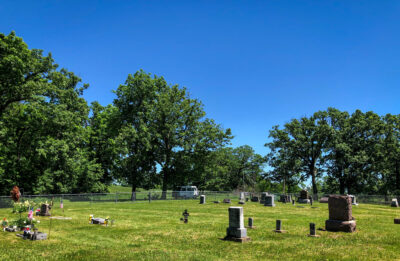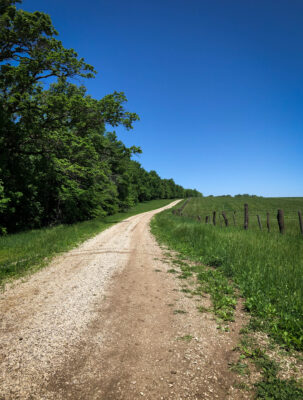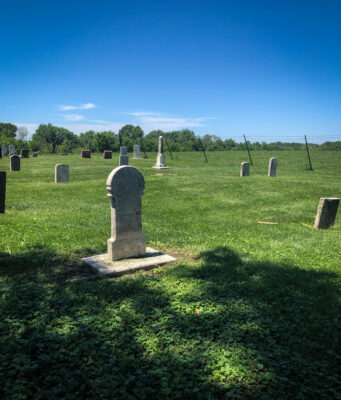
A Tragedy
My peregrinations around the county came finally to the main story.
 Three cemeteries and one Mennonite farmstead later, I understand a little more of my own story too. My mother’s mother’s maternal grandmother, Rosina, lasted all of a few weeks after immigrating here. My mom never spoke of how my great-grandmother was left motherless as a young girl when typhoid fever took two little brothers, a sister, and then her mother, right after coming to a place where she couldn’t yet speak the language. My mom would only say repeatedly how she detested her grandmother and disliked her mother. She had no time for her family history.
Three cemeteries and one Mennonite farmstead later, I understand a little more of my own story too. My mother’s mother’s maternal grandmother, Rosina, lasted all of a few weeks after immigrating here. My mom never spoke of how my great-grandmother was left motherless as a young girl when typhoid fever took two little brothers, a sister, and then her mother, right after coming to a place where she couldn’t yet speak the language. My mom would only say repeatedly how she detested her grandmother and disliked her mother. She had no time for her family history.
This is why I inherited many family photographs. And of all the ancestresses whose faces I’ve seen, Rosina’s is the only one in which I can see a bit of myself. Anyway, I donned my swirly knee-length skirt and white tank top as it looked to be warm. Plus, I was going to visit Mennonite graves, and I fancied it was a show of respect. I am, in some ways, a very traditional woman.
The first cemetery, Union Cemetery, was out in a dead-end corner of the county on miles of gravel road. These tucked-away grave plots say much of how the people there were bound to the land. This is where they took their stand, or found their ‘angle of repose,’ as Wallace Stegner’s book recounts so well. Checked off a couple of great-great grandparents, and even great-great-great grandparents.
Then off to the very flat Knights of Pythias Cemetery, where I tromped about in disgusting muck to finally find Rosina’s husband and his second wife, buried in a different cemetery from her. A mower had rutted the grass in front of the grave I wanted to photograph, and it was full of water from the rain last night. It smelled like something rotting, which is not what you want to smell in a cemetery, crouching in your swirly skirt, wearing flip flops.
Finally North Pulaski Cemetery, and there was a white marble obelisk, barely legible. She and the children all on one marker, separated from the rest of the family. Did she die of heartbreak? Did she miss her mother back home? At this point I was hot, and sat down in the shade of a tree for awhile to think about how separation seems to define the mothers and daughters of my family. I was not able to force a psychic connection, and had to go to the bathroom, so got up and washed my feet off, and that was that.
I then went to find the farm of the Mennonite woman who did a book on the people of the Pulaski church. She was very thin, and showed a sensitive, impatient character that I share also with my mother and my daughter. She was not slow and heavy in her speech, like the ‘regular’ locals. She had a garden, with lots of rhubarb. My mom and grandma (and I, once upon a time) always had a garden, and a rhubarb plant. I bake a rhubarb pie every year. It’s everyday things, and the ways of thinking behind them, that I share with them. I bought a copy of the book. I don’t know if anybody but me will care, but my grandma would have been thrilled.
Saw a genealogical society woman again at the library, in the early evening, and she confirmed that few people around here have a garden. They buy their produce from the local Amish. I suppose farming all day on hundreds of acres of corn could put you off gardening.
And I see that my roots are not here. My great-great grandmother, who passed her traditions and her temperament, somehow, to me, lived here for a few weeks and gave up to typhoid. So, my roots must be in Switzerland. I wish Janet could swim!

